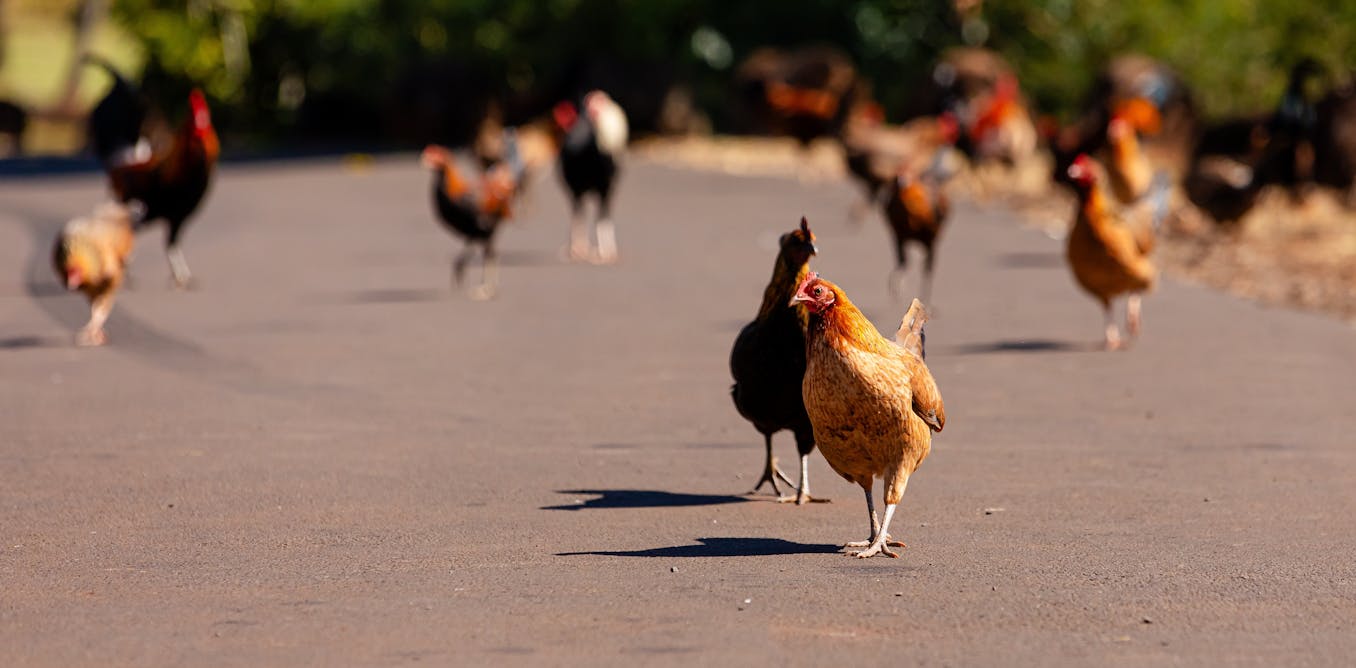Invasive species that follow one another and look alike
The non-native birds introduced to the islands are also more closely related than would be expected in the absence of humans. Indeed we know humans select the species introduced (whether voluntarily or not), and that they tend to belong to the same family or closely related families that tend to resemble each other, as in the case of the Gallinaceae family (such as hens, turkeys and pheasants), which originated in Asia, Africa or America but were spread to the islands by European settlers who transported domesticated populations for food or hunting.
Nowadays, these species have reverted to wild populations on many of the world’s islands, wreaking havoc on local communities.
A definite threat to island resilience in the face of change
All of this paints a very worrying picture for island biodiversity, and that’s without mentioning threats beyond biological invasions.
We already know that invasions are the leading cause of extinction in islands. Added to this is the selection of introduced species, which has a direct impact on new bird communities. We are also witnessing a form of homogenisation on the islands: if all the species that are transported, introduced and then become established have the same characteristics, then the communities on the islands, even if they are geographically very distant, will end up looking very similar.


